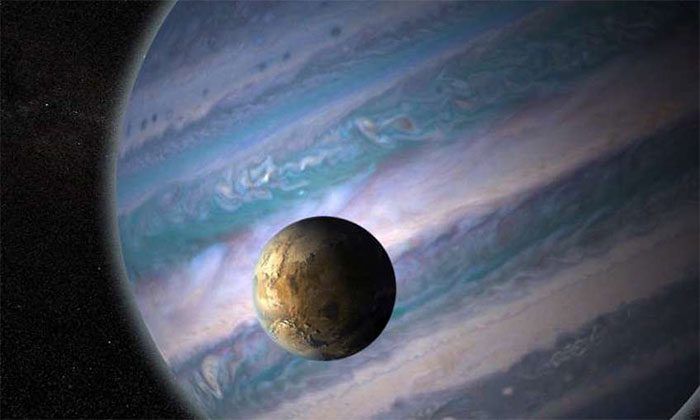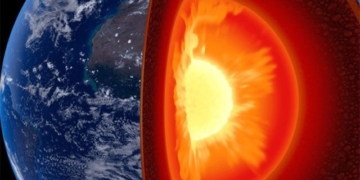Something seemingly unrelated may actually be one of the key factors that make Earth habitable, and it could be an important sign of life that astronomers should search for in exoplanets.
According to SciTech Daily, this is a moon that is just the right size, like Earth’s moon. A research team led by Associate Professor Miki Nakajima from the University of Rochester (USA) asserts that the moon has contributed to creating an ideal environment for life to develop and evolve on Earth.

The moon helps regulate Earth’s climate by stabilizing the planet’s rotation axis.
Specifically, the moon controls the length of the day and ocean tides, influencing the biological cycles of all life forms on the planet. It also contributes to regulating Earth’s climate by stabilizing the planet’s rotation axis.
Therefore, the research team believes that searching for a moon similar to Earth’s moon is an effective screening tool for astronomers to identify planets with the potential for life.
It must be a moon large enough to exert a moderate influence on its planet. Our moon has a radius greater than 1/4 of Earth’s radius, a ratio much larger than that of most moons of other planets.
In a publication in the journal Nature Communications, Professor Nakajima’s team at the University of Rochester, along with scientists from the University of Arizona (USA) and the Tokyo Institute of Technology (Japan), examined the formation of moons and concluded that only certain types of planets are capable of forming a large moon relative to their parent planet.
Earth’s moon is believed to have formed from a collision between the young Earth and the planet Theia, which was about the size of Mars, around 4.5 billion years ago. The collision sent debris into space, forming an evaporating disk around Earth’s orbit.
Over time, this disk cooled and created liquid moon particles—the building blocks of the moon—eventually coalescing into a new celestial body.
Rocky planets that are too large (more than 6 times Earth’s mass) and planets equal to or larger than Earth will create completely evaporating disks, where the developing moon particles are subjected to strong atmospheric drag, causing them to fall back onto the parent planet, thus leaving insufficient material to form a large moon.
This is significant because current exoplanet searches mainly discover worlds larger than 6 times Earth’s mass, simply because they are easier to detect than smaller planets like Earth, which clearly makes the dream of finding extraterrestrial life more distant.
Scientists hope that new data will provide the necessary direction for future campaigns to hunt for Earth-like exoplanets, as current telescopes are capable of searching for many small rocky exoplanets like Earth and even identifying a few moons outside the Solar System.


















































